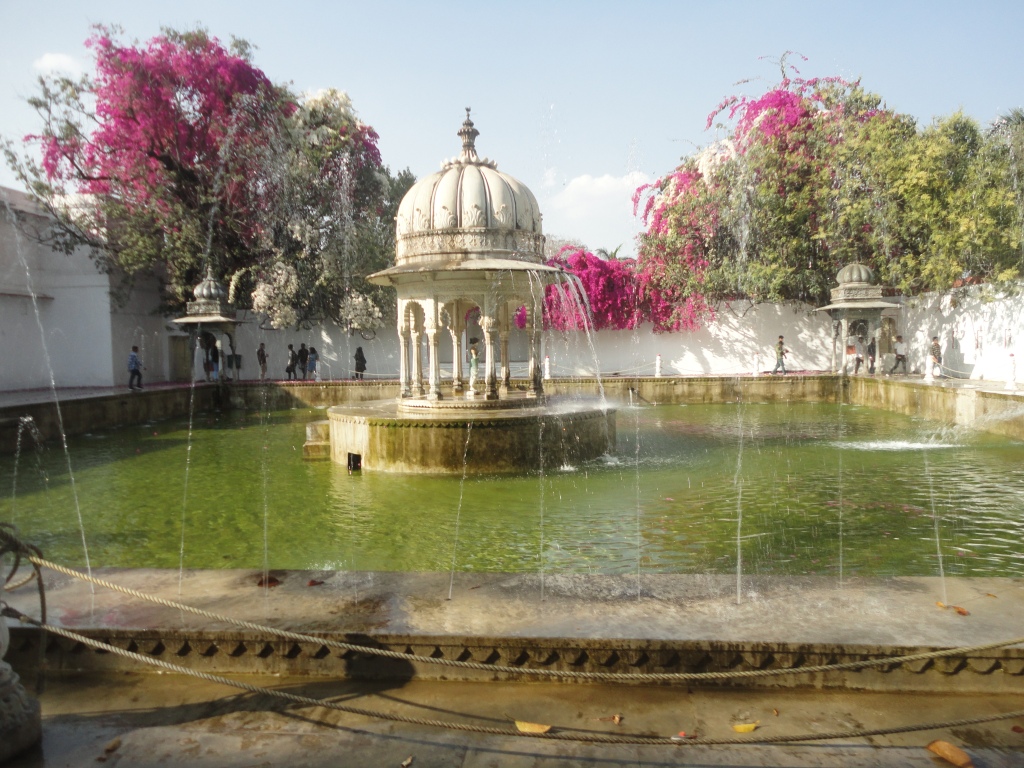Hello, I’m Veronica
The sky is not completely dark at night. Were the sky absolutely dark, one would not be able to see the silhouette of an object against the sky.
-
Chittorgarh Fort
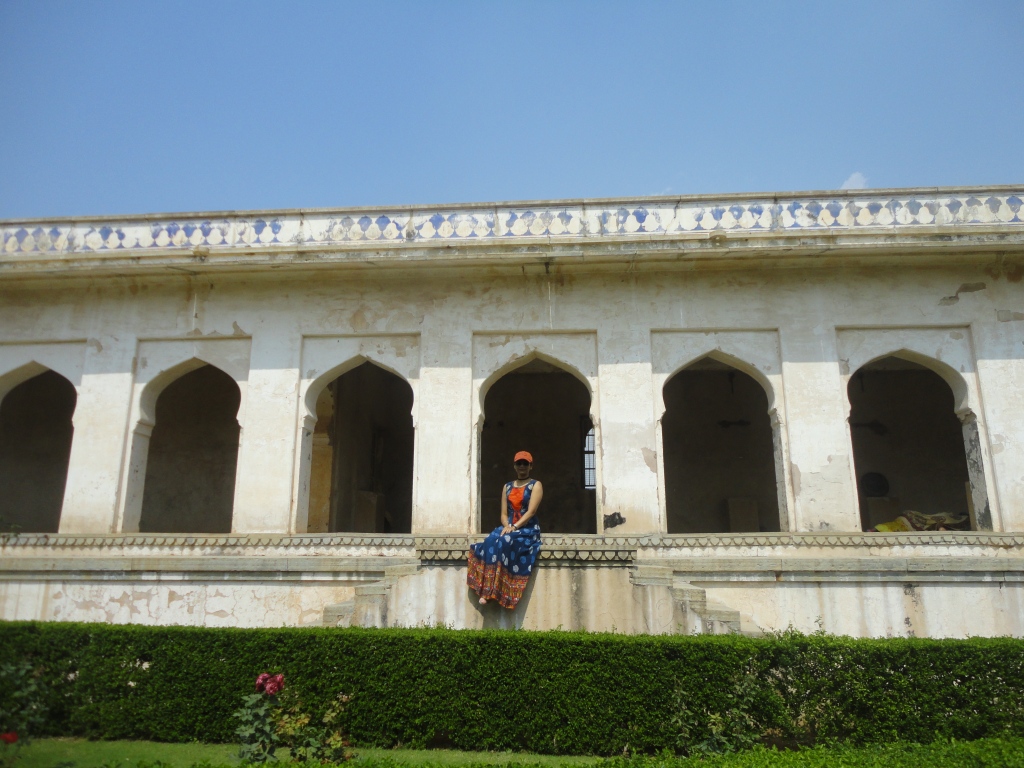
Chittorgarh Fort is regarded as the symbol of Rajput chivalry, resistance and bravery. The fort is situated 175 kilometer to the east of Udaipur and is believed to be named after the person who built it, Chitrangada Mori. The famous Chittorgarh fort, which is one of the largest in India, is situated on a 180 meter high hill that rises from the banks of river Berach. The fort is known for its seven gates namely Padan Gate, Ganesh Gate, Hanuman Gate, Bhairon Gate, Jodla Gate, Lakshman Gate and the main gate which is named after Lord Ram. The Chittorgarh fort houses many palaces, like the Rana Kumbha Palace, the Fateh Prakash Palace, the Tower of Victory and Rani Padmini’s Palace. All these structures are significant for their Rajput architectural features. There are also many temples within the fort. A huge complex of Jain temples are a major attraction. Chittorgarh fort, along with other hill forts of Rajasthan was declared as UNESCO World Heritage Site in 2013.
Location: Chittorgarh, Rajasthan
Built By: Chitrangada Mori
Occupants: Mauryas of Chittor, Guhilas of Medapata, Sisodias of Mewar
Area: 691.9 acres
Current Status: The fort has been declared as UNESCO World Heritage Site
Visiting Time: 9:45AM – 6:30PM
Important Structures: Vijay Stambh, Kirti Stambh, Gaumukh Reservoir, Rana Kumbha Palace, Padmini Palace, Meera Mandir, Kalikamata Mandir, Fateh Prakash Palace, Jain Mandir
Seven Gates of the Fort: Padan Pol, Bhairon Pol, Hanuman Pol, Jorla Pol, Ganesh Pol, Laxman Pol, Ram Pol
History of the Fort
In ancient India, the place where the fort is currently present was known as Chitrakut. Due to the ancientness of this fort, there are no clear evidences supporting the origin of the fort. There is however, a bunch of theories that are still subjected to debates. The most common theory states that Chitrangada Mori, a local Maurya ruler built the fort. A water body which was situated next to the fort is said to have been created by the legendary hero of Mahabharata, Bhima. The legend has it that Bhima once struck the ground with all his might, which gave rise to a huge reservoir. Bhimlat Kund, an artificial tank next to the fort, was where the legendary reservoir once sat, it is said.
Thanks to the fort’s majestic appearance, many rulers in the past have tried to capture it, in an attempt to make it their own. Bappa Rawal of the Guhila dynasty was one of the earliest rulers to have captured the fort successfully. It is said that the fort was captured by him around 730 AD, after defeating the Moris, to whom the fort once belonged. Another version of the story states that Bappa Rawal did not capture the fort from the Moris but from the Arabs, who had captured it from the Moris, even before the arrival of Bappa Rawal. It is said that Bappa Rawal was part of the army led by Nagabhata I of the Gurjara Pratihara dynasty. It is believed that this army was mighty enough to defeat the famous troops of Arab, who were considered imperious on a battle field back then. Another legend has it that the fort was given as part of dowry to Bappa Rawal by the Moris, when they gave the hand of one of their princesses in marriage to Bappa Rawal.
The Conquest of Alauddin Khilji
The fort remained with the rulers of the Guhila dynasty for a long period of time until 1303, when the ruler of Delhi Sultanate Alauddin Khilji decided to capture it. He took over the ownership of the fort from King Ratnasimha after a siege that lasted for about eight months. This conquest is associated with massacre and bloodshed as many believe that Alauddin Khilji ordered the execution of more than 30,000 Hindus after capturing the fort. Another famous legend states that the fort was captured by Khilji in an attempt to force Padmini, the queen of Ratnasimha, into an extra marital relationship. This motive of Khiljiis said to have resulted in the mass self-immolation (jauhar) of Chittorgarh women, led by Queen Padmini. A few years later, Alauddin Khilji passed on the fort to his son Khizr Khan, who possessed it until 1311 AD.
Layout of the Fort
The fort, when viewed from above, looks roughly like a fish. Spread across an area of 700 acres, the circumference of the fort alone covers an area of 13 kilometers. There are seven massive gates, safeguarding all the entrances. The main gate is called as Ram Gate. The fort has 65 structures including temples, palaces, memorials and water bodies. There are two prominent towers within the premises of the fort namely Vijay Stambha (Tower of Victory) and Kirti Stambha (Tower of Fame).
Vijay Stambha was built by Rana Kumbha in 1448 to celebrate his victory over Mahmud Shah I Khalji. The tower is dedicated to Lord Vishnu. The slabs in the uppermost part of the tower contain a detailed genealogy of the rulers of Chittor and their deeds. The fifth floor of the tower contains the names of the architect, Sutradhar Jaita, and his three sons who helped him build the tower. The remarkable religious pluralism and tolerance practised by the Rajputs is clearly visible in the victory tower. The Jain Goddess Padmavati sits at the topmost storey, while the third storey and the eighth storey have the word Allah carved in Arabic.
Kirti Stambha was erected by Bagherwal Jain in the 12th century to honor Adinath, the first Jain tirthankar. It was built during the reign of Rawal Kumar Singh (c. 1179-1191). The tower is 22 metre high.
Next to Vijay Stambha stands the famous Rana Kumbha’s palace, which is now in ruins. The palace once served as the main residence of Rana Kumbha and is one of the oldest edifices within the fort.
Next to the palace of Rana Kumbha stands the Fateh Prakash Palace, built by Rana Fateh Singh. There are also modern halls and a museum located next to these impressive palaces. It was built in the Rajput style of architecture , and the has a vast collection of wood crafts, post medieval statues of Jain Ambica and Indra, weapons like axes, knives and shields, terracotta statues of local tribal people, paintings, and crystal ware.
Next to the Kirti Stambha stands a temple dedicated to the poetess-saint Meera.
In the southern part stands the majestic three storied structure, Rani Padmini’s palace.
A few meters away from Padmini’s palace, is where the famous Kalika Mata Temple is located. Initially a temple dedicated to the Sun God, it was reconstructed to house Goddess Kali. Towards the western side of the fort, stands another temple dedicated to Goddess Tulja Bhavani.
The Seven Gates
All the gates were built for security purposes and not surprisingly, the gates have special architectural designs. The gates have pointed arches, to make sure it provides extra protection should there be an attack. Notched parapets were built on top of the gates, enabling soldiers to shoot arrows at the enemy army. There is a common road that runs inside the fort, connecting all the gates. The gates, in turn lead to various palaces and temples within the fort. All the gates have historical significances. Prince Bagh Singh was killed at the Padan Gate during one of the sieges in the year 1535 AD. During the last siege, led by Emperor Akbar, Rao Jaimal of Badnore was allegedly killed by the Mughal emperor himself. This incident is said to have taken place somewhere in between the Bhairon Gate and Hanuman Gate.
Architecture
All the seven gates of the fort are nothing but massive stone structures, aimed at providing maximum security from the potential threat of enemies. The entire fort is built in such a way that it makes it almost impregnable for the enemies to enter. To ascend the fort, one has to go through a difficult path, which itself proves that the architectural design of the fort was aimed at keeping the enemies at bay. This is one of the main reasons why the fort was sieged by various kings at regular intervals. In between the second and the third gate there are two Chhatris or cenotaphs, built in honor of Jaimull and Patta, the heroes of 1568 AD when the fort was siege by Emperor Akbar. These cenotaphs are considered as architectural marvels. The tower of the fort is nine storied and is adorned with sculptures of Hindu deities and stories from the Ramayana and the Mahabharata. The tower provides a breathtaking view of the city.
Architecture of Palaces
The palace of Rana Kumbha was built using plastered stone. One of the main features of this palace is its series of canopied balconies. Suraj Gate leads to the entrance of this palace, which is associated with a host of legends. Padmini’s palace is an impressive edifice with three storeys. The old palace, which was ruined due to various reasons, was reconstructed in the early 19th century. The building, as it stands today, is white in color. The architectural design of the old palace was a nice blend of Rajput and Mughal architecture.
Love,
Preeti.

Mahalinga Temple on the Fort. Intricately carved and splendid detailing all over the temple.
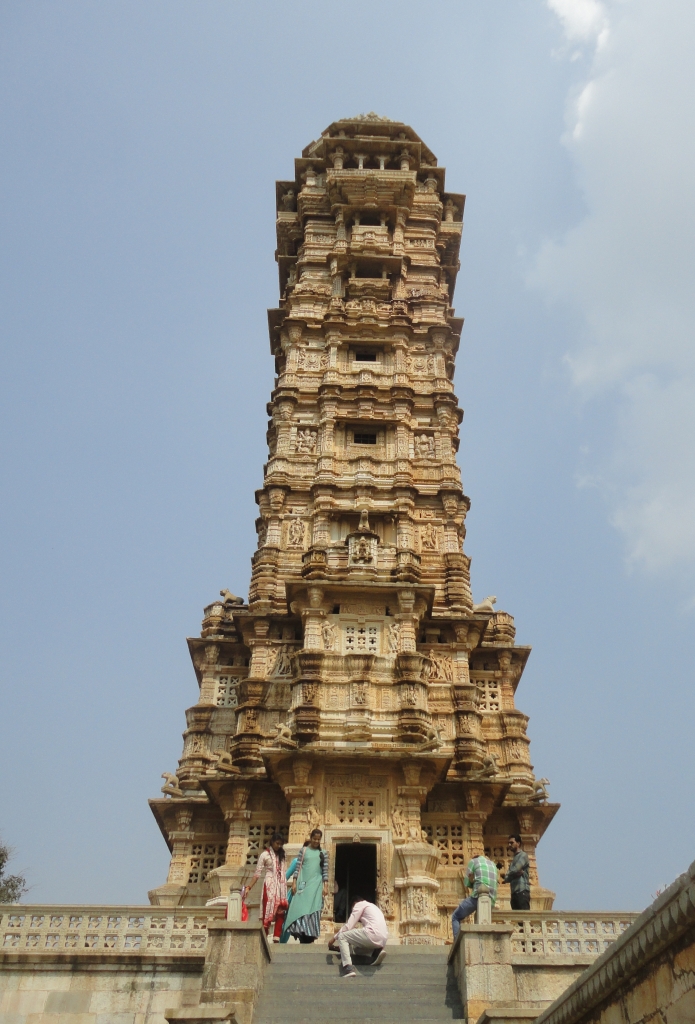
Vijaystambh does not need any other introduction ! 
Viewing Gallery for Rani Padmini outside her Palace. 
Padmini Palace, only few parts are left. This is inside the lake which she used to stay in hot summer days. 
This used to be the home for helpers and dasi to Rani Padmini. 
Courtyard of Palace of HRH Raja Rawal Ratan Singh of Chittorgarh. Now this Palace is Government Museum. 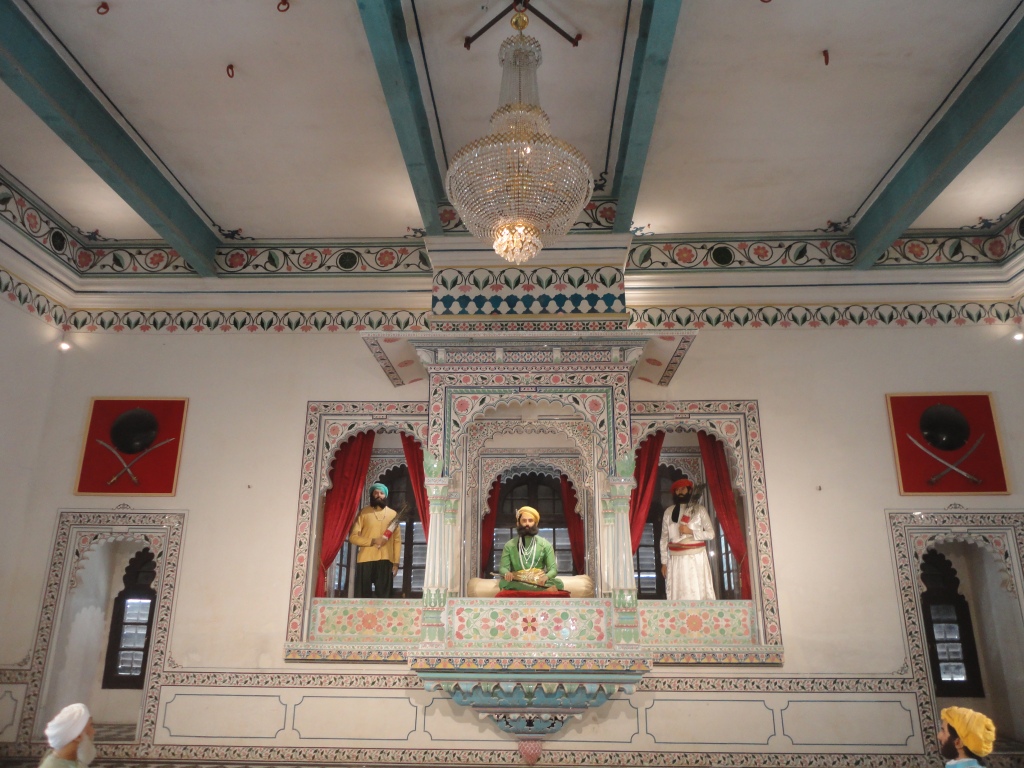
Beautifully decorated Darbar of HRH Raja Rawal Ratan Singh.
-
My Art Quilts
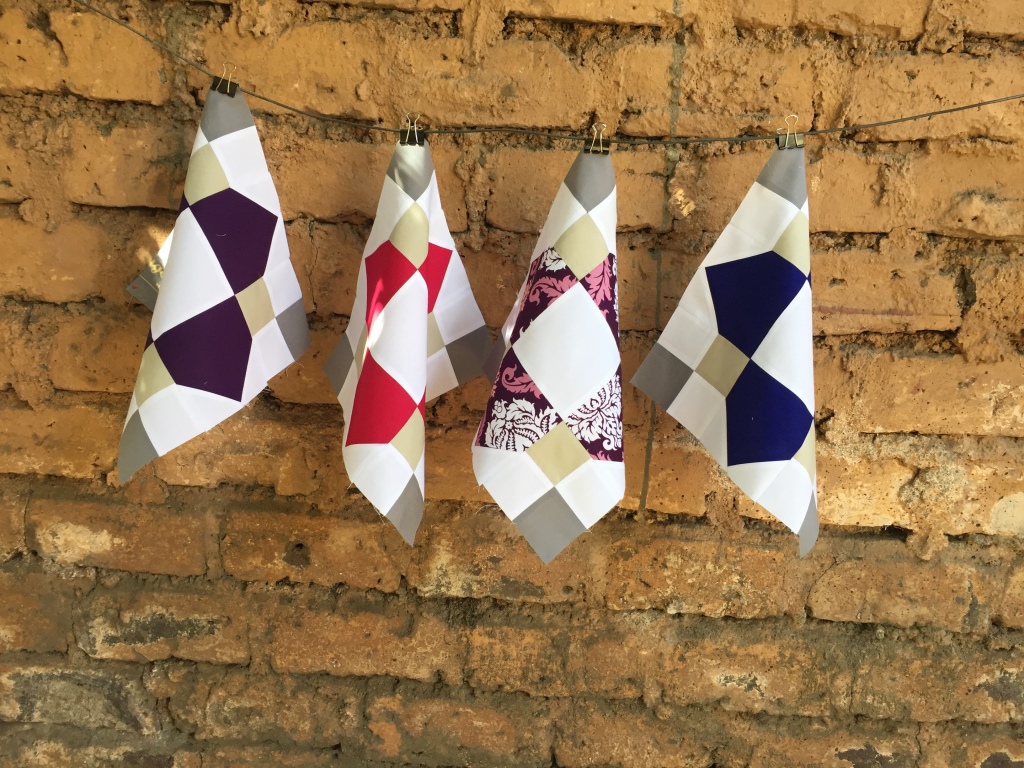
All over the globe, cultures have developed their own unique ways to sew together layers of fabric, creating a world of traditional styles of quilting. In every corner of the map, people draw on the world around them and their cultural history to repurpose scraps of fabric – whether it be flour sacks or old dresses – into something new, beautiful and meaningful.
By the time you people know that I am a superlative textile enthusiast. May be it’s my sarees, handloom, prints, different weaves and hand embroidery. Then how come quilts won’t be dear to me … ?
Being Architect, Art Quilts fascinates me. It lifts up the area of your décor so effortlessly. So I decided to go for Art Quilts classes with Sewlibrity Shruti Dandekar Maam.
What is Art Quilts –
Art Quilts is quilt style deviates from the use of traditional, historical block and patterns. The emphasis is on the design rather than functionality. Art quilts are also created in a variety of styles such as Abstract, improvisational, collage, landscape or nature inspired as well as pictorial or portrait quilts.
Basic Styles –
- Patchwork quilts made from pieces of fabrics cut into square, triangles and stitched together.
- Applique Quilts
- Embroidered Quilts
Firstly, I started with Hawaii Applique Quilt. The pattern making was so interesting. My architectural tracing sheets finally used after 3-4 years to develop pattern and after attempting hundreds of them landed on one. The use of Pellon paper was something new to me to make an applique on fabric. By this time I am very much in love with Pellon paper now. I was sitting on a sewing machine after decades and I got used to it very quickly. Bernina helped me a lot, they are pioneers in sewing machine. For my very first quilt I chose my favourite colour combination white and sky blue and it turned out amazing than my expectation. I was a happy kid after my first quilt.
Them learnt piecing, modern quilts, applique portraits, reverse applique portraits, free motion quilting designs and architectural sketches on fabric. And the list is going on….
As the time passes my interest grew up so fast that I got addicted into making art quilts and engaged myself in studying Art Quilt Artist. Elizabeth Hartmen, Victoria Findlay Wolfe and many more to name. I was meticulously working on my mixed media Art Quilts. I tried to colour some of them with fabric pencil colours and applique to go hand in hand. This was the time I got addicted to Pinterest too. Pinterest helped me to explore ideas, try new things and explore more practical things. I can’t Thank enough to it !!
You can get many online classes or tutorials on social media. I recommend you to go for it once. Try to give at least six months to experiment, learn Art Quilts, it definitely help you to be more creative and productive. The best part is, you will try to incorporate designs or patterns on to your own clothing and home décor. Trust me I have designed many of my jackets, blouses and t shirts. My largest Art Quilt is displayed in my living room and each and everyone asks me for the same. I feel proud on myself. You can spot many small Art Quilt frames in my home’s corners. Thank me later for this tip.
Happy Quilting to you !!
Love.
Preeti.

Free Motion Quilting of Paisleys 
Reverse Portrait Quilt of Fashion Icon – Audrey Hepburn. Dates back in April 2014 
Piecing with Free Motion Quilting. Pattern by Elizabeth Hartman. 
Cathedral Windows Pattern. Toughest one I attempted. 





Architectural Series – Ar. Geoffrey Bawa, Opera House, Sydney, Ar. Mies Van Der Roh, Stonehenge England, Ar. Zaha Hadid,

Applique Portrait Quilt- This took 2 months to complete 
Kathakali Dancer – Mix Media Art Quilt – Pencil Colours, Applique technique and Free Motion Quilting 
Last but not the least – Love – Paris !!
-
Himachali
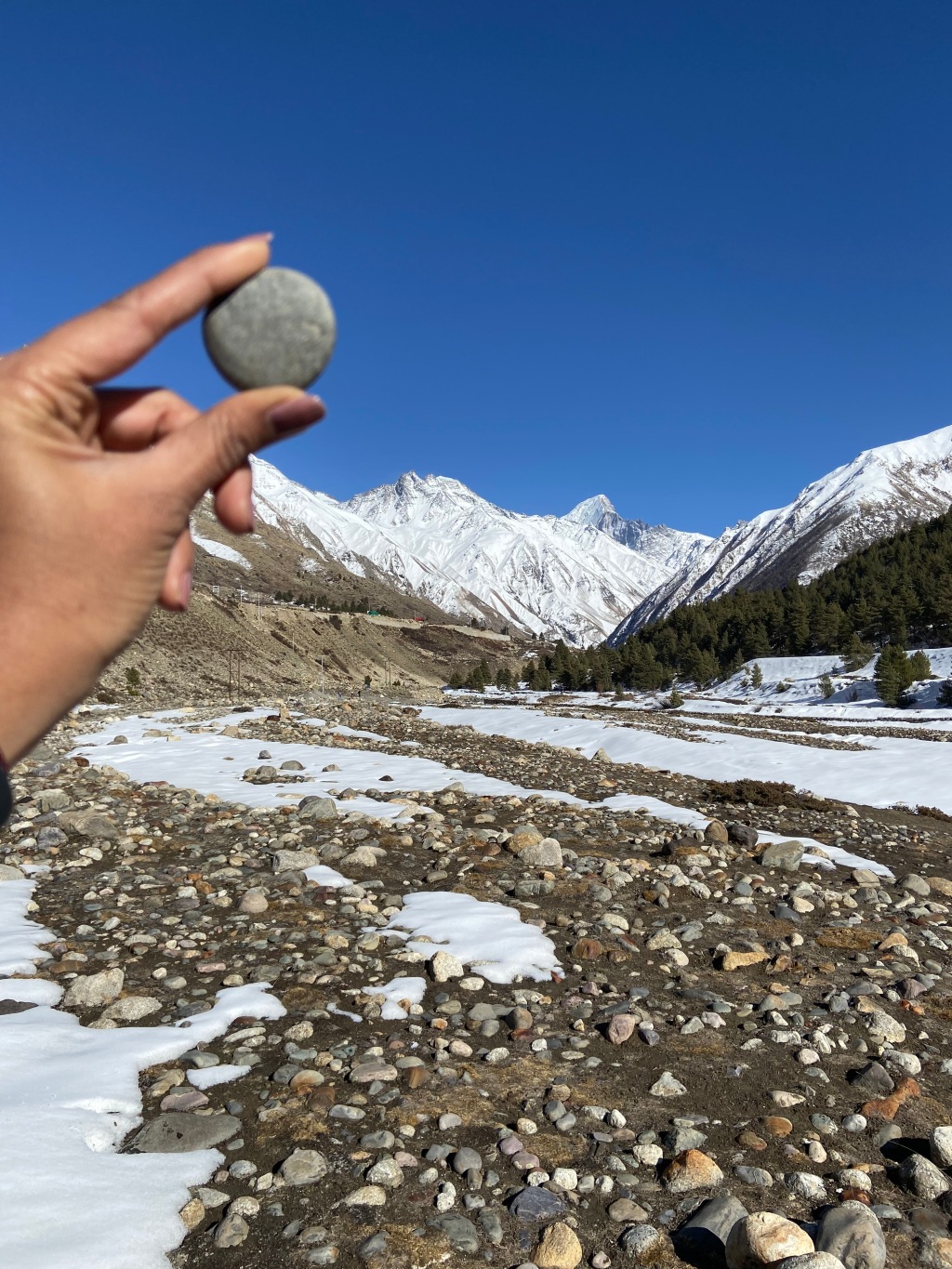
I am an Architect and my bucket list is full of Architectural places to visit. Snow Drive Expedition in beautiful Himachal was never ever imagined by me, but in February 2021 I took this adventure with LA Himalaya.
LA Himalaya itself is a worth story of thousand words and Puneet Ji is such a gem person. Travelling with LA Himalaya was my lifetime experience and I have promised myself to go on a trip with them every year. (As I can’t drive, but Puneet Bhai ke bharose I challenged myself)
Every turn and every road gives fresh perspective to life and refreshes zeal to live full throttle. When I breath amid the beauty of Himalaya I truly feel that I am alive. I am forever grateful that I discovered the Himalaya and now it’s a lifelong passion. Himalaya is an exact epitome of inspiration. Every bit of Himalaya oozes inspiration to live a grand life. Driving on curvaceous roads and passing through lovely woods and verdant valleys give me real adrenaline kick. Every feet of climb is a test of endurance that encourages me to challenge my limits.
The trip was for 10 days. The loop was like this –
Home – Mumbai – Chandigarh – Narkanda – Baga Sarhan – Sangla – Chitkul – Sangla – Narkanda – Shimla – Chandigarh – Mumbai – Home.
Day 1
I started from home to Mumbai Airport and then flew to Chandigarh. Due to pandemic and farmers protest Chandigarh was not in its full glory. To visit Rock Garden and Le Corbusier’s Buildings is still in my list, this time I couldn’t make it possible but next time for sure. Please visit Sector 8 for yummy and delicious food options and Resto and Bars.
Day 2
With the super excitement I started my journey to Narkanda. As I reached Shimla, the cold breeze and Haseen Vadiya filled my heart and at first sight, I felt in love all over again with Himalayas.
With ease of journey I finally reached at Narkanada after 6 hrs of travelling. Tethy’s Ski Resort is most amazing, vintage style property. The warmth, hospitality and food will never fail to surprise you. And then I met Puneet ji for the first time, kind hearted, charming and caring person. As I met him, all my worries vaporized and I started enjoying bone fire, food and met new people. Listening to stories from people who were return from expedition and getting tips from them was like accelerating the excitement. Puneet ji is the best dancer too, as I have learnt few Himachali folk dance steps from him.
Day 3
The real expedition day arrived finally! We were a group of 16 people and it was fantastic to meet new people from all over India. After a great brief we headed towards Baga sarhan. The road was marvelous. Satlaj River accompanied us almost half of our way. Many hydro projects are going on and it’s good to see better future of India. First day was pure leisure. Noticing small details of houses, art, architecture and people was my personal favourite thing and made my journey fantastic. Baga Sarhan’s open meadows are the most beautiful, scenic place I have visited till date. The large meadows, a small temple of goddess at the one corner, our cottages at the last end and mountains at the backdrop were just picture perfect. How can I ask for more ?
A small trek to waterfall, high tea and snacks we geared up for bone fire party. The temperature was 2 degree Celsius and was cloudy too. I swear I have never ever tasted such yummy momos in my life. The hospitality, food and party were top class.
Day 4
Though it was heavy rainfall at night, morning was clear sky and bright sun. Moods of Himachal weather you can say. Headed towards Sangla. A totally thrill of travelling on unseen route – The famous Kinnaur route. India’s one of the most dangerous roads and it was my dream come true moment. It made me to stop at every corner and watch the beauty, hats off to the engineering and execution of roads. The road is mesmerizing till Karcham Damn. As we pass the Karcham Damn, we enter into Baspa Valley which is another heaven on earth. Light showering rain, no traffic, no pollution, no crowd and no network rather poor network is the best life “The Thing”.
I am falling short of words or rather speechless to say about my love for Sangla and stay at Banjara camp. The resort is absolutely divine, isolated and located in the lap of mountains and surrounded by apple farms. Architecture, traditional décor, hospitality, modern – traditional blended spacious rooms were breath taking. My love for Banjara camp is extending its limits and permanently took place of my mobile wallpaper. Bone fire, yummy food and dance, sing a song was our best part of daily routine by now.
Day 5
Got up little early and took a stroll around near village. Due to pandemic everything was close but we decided to take a walk and visit. Crossing small bridges, listening to pure sound of river water, walking with mountains view is the thing to keep in your heart for lifetime. We visited Kalpa village, a century Old Hindu Temple which is the best of Himachali Architecture. Detailed wooden carving, stone as a major element, you will fall in love with the peace. As it was close, we somehow requested and manage to visit.
I had visited another Buddhist Temple after that which is in ruin condition now. I met one 80 years old lady and she was making pickle from apples, with so much of joy she shared her traditional apple pickle recipe with me and her childhood memories with the Buddhist Temple. Now I realize why Architecture and People are emotionally connected. And on the way back I have met one more lady who was knitting sweater with super fast speed and she completed one row knitted within an eye blink. After a quick visit to village and temples it’s time to head towards Chitkul.
The famous Chitkul village is a favourite place of every traveler who heads to Spiti. Baba ka Aakhiri Dhaba, India’s last village, cricket ground of school, Baspa river all these famous spots reminds you of IG posts you checked before your trip. The windy weather with bright sun and almost minus temperature, I told you, tantrums of Himachal weather.
Again back to Banjara camps but this time it was farewell to my other group members, as we were coming back to Narkanda and they were heading to Spiti. I put together many memories with these new people and now we are friends for life. Today it was more about saying good bye, photos together and promises to keep in touch. It was a final adieu until next time.
Day 6
We were only left behind at Banjara and all of a sudden this place was empty. With my heavy heart I said good bye to the most most loving and favorite place of mine.
On way back, we visited Padama Palace at Rampur Bushahar. We were so lost in memories and silent all the time, was not really in a mood to visit but our driver insisted us and recommend having lunch at NUA Nabh Heritage Hotel. I guarantee you; this will definitely cheer up your mood. The palace was closed but we took a stroll around. A 16th century palace is well maintained and still in its glory. NUA Nabh Hotel is truly a marvelous piece of Himachali traditional architecture. As I am fond of wooden carvings, no wonder this place etch a place in my heart within a minute. A vintage case iron coffee table was something new to me and delicious, perfectly cooked mutton biryani was the cherry on top.
Back to Tethy’s Resort at Narkanda with full of memories, but Puneet ji made it sure that we are receiving best hospitality in his absence too.
Day 7
Narkanda to Shimla journey was about self promises, realization and life lessons. In Shimla, we visited only Jakhu Temple and headed towards Chandigarh for stay.
Jakhu Temple is famous for 108 feet tall Hanuman ji statue, fortunately it was almost empty. No crowd and surreal enjoyed the view of Shimla city from top place. Shimla settlement is one of the melodious city in the lap of Himalaya. No wonder if you fell in love with pleasant and clean city. Back to Chandigarh base.
Day 8
A heavy heart with full of memories, quality time, life lessons and satisfaction flew from Chandigarh to Mumbai and then pavilion – Home.
If you are planning a 4X4 expedition, LA Himalaya is the only travel company you should go for. Trust me, I can’t even drive, still I accepted this adventure, trusted Puneet ji and LA Himalaya team. I highly recommend you, book your slot with LA Himalaya pack your bags and go without giving any second thought. You will experience best hospitality, food, safety and bag full of memories.
Robert Frost’s immortal words to every road tripper – I took the one road less traveled by and that has made all difference – are like the real testaments !
Sharing some contacts and details, I hope it will help you.
- LA Himalaya – Mr. Puneet Sharma – 090540 00022
- Arun Driver ( To hire taxi from Chandigarh) – 082190 58804
- Hotel Sunbeam, Sector 22, Chandigarh. Ph. No. – 0172 – 4505050 – This is the best option to stay. Affordable, clean and excellent food.
- Must pack for expedition – A body warmer, snow shoes, woolen cap, woolen socks, water repellent jacket – are musts. Else carry your regular cloths as of choice.
Love,
Preeti.

Wild Yak on my way in village stroll, said Hi almost aggressively. 
The famous Chitkul School and its cricket ground – Last Village on India – Tibet Border. 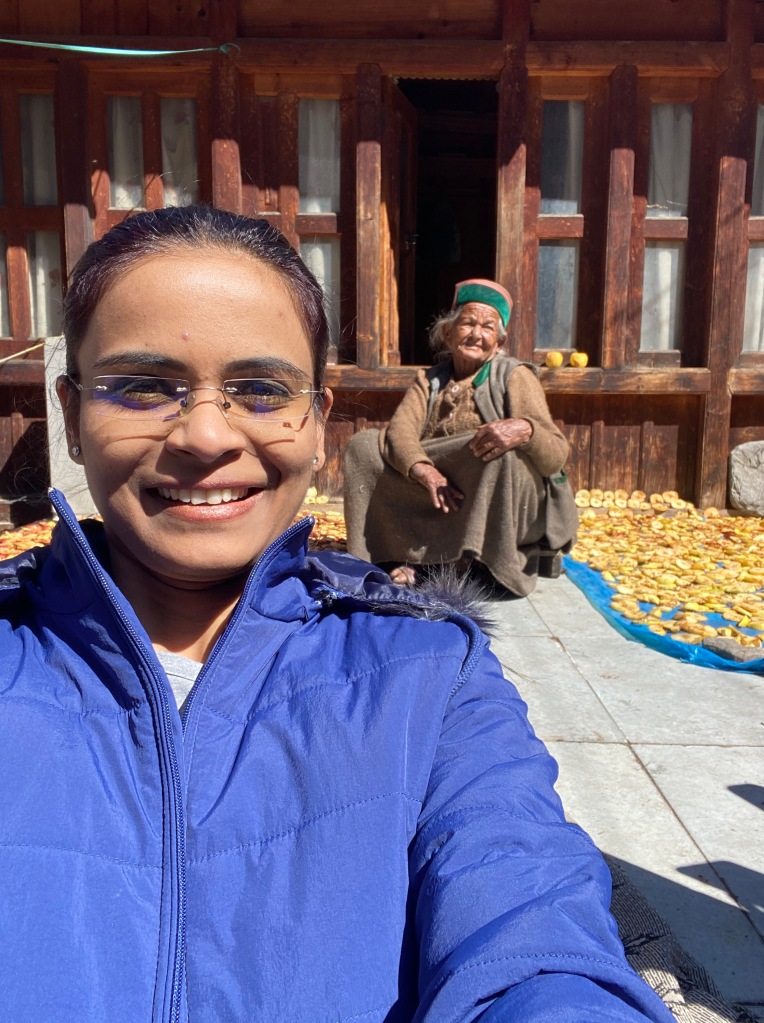
Old lady making Apple pickle. Look at her grace ! 
Kinnaur Road
-
Bookstagram
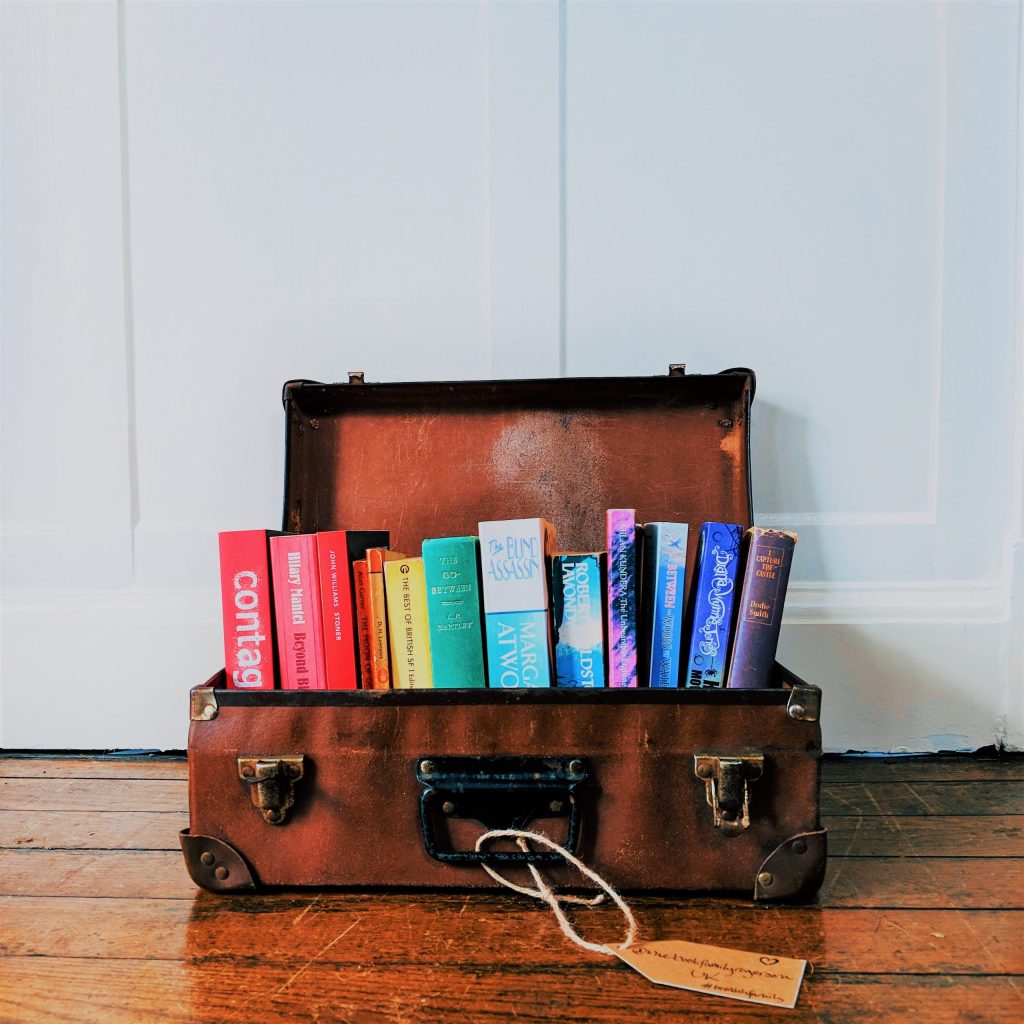
Hello Folks !
I am not gonna tell you why we should read and why not. But I am gonna help to choose books from where to start. Here is a list of 100 books you must read in next 5 years or in your lifetime.
This is the list of combine genres – Self Help, Personal Development, Start ups, Biographies of Legends and some Fictional stories. Of course this is my very personal choice and which I usually prefer to read. Rathar I would say everyone must read them once.
Please download the free pdf of books list and wishing Happy Reading to you !
Love,
Preeti.
-
Sacred Places
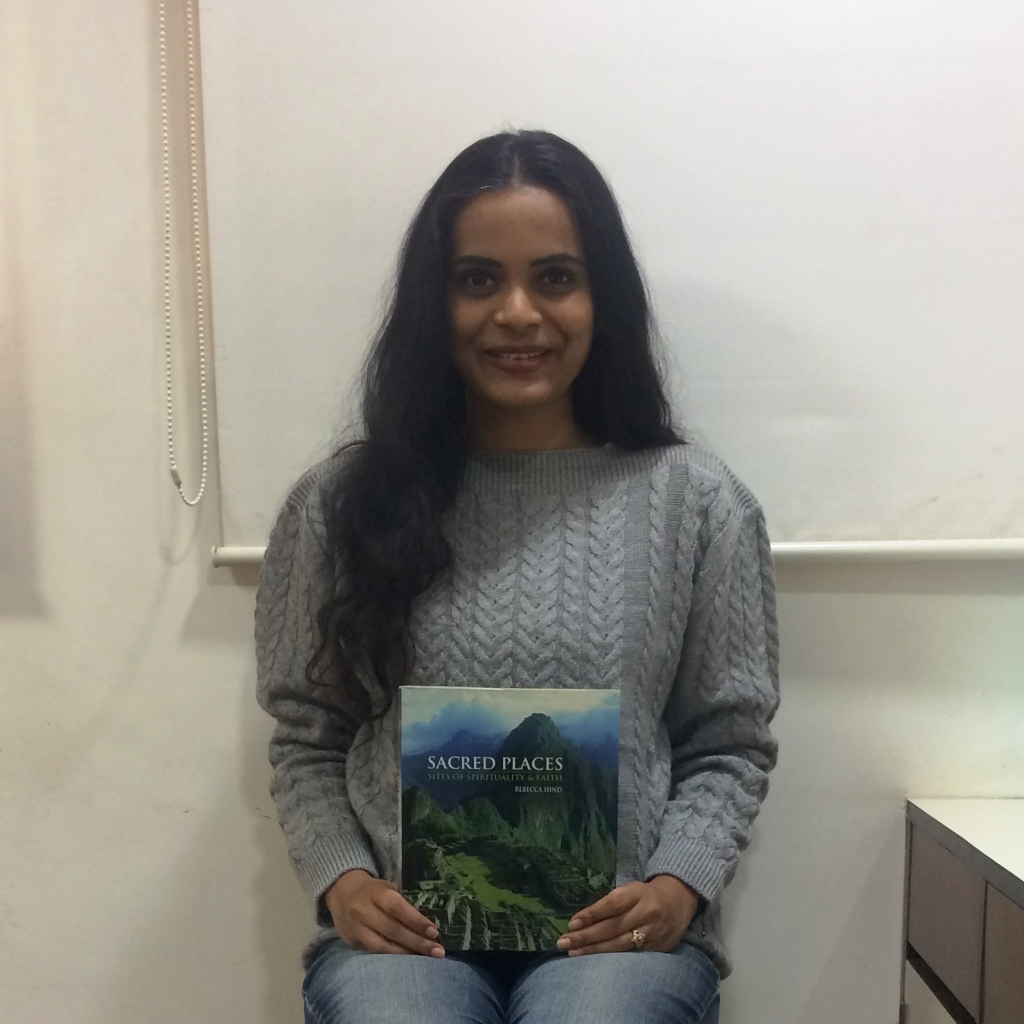
Sacred Places
Sites of Spirituality and Faith
By Rebecca Hind
A beautifully illustrated journey to ancient sites that have been reversed for centuries, Sacred Places is a rich melting pot of destinations for those interested in the epicentres of religion and spirituality around the world. Interfaith in scope, the book relates the influences that make each site so historically and culturally significant and explores how a combination of natural landscape, man – built edifices and artistic endeavours converge to make the sacred manifest.
The author of this book Rebecca Hind was an artist to the Sacred Land project, a scheme to conserve, enhance and develop Britain’s sacred sites and to the Alliance of religions and conservation. The author of “1000 Faces of God” and “Scared Journeys”, Rebecca used to teach life drawing and art workshops at Oxford College.
A chapter on “The Americas” explores ancient Mayan temples as well as the natural landscapes of the Grand Canyon and Niagara Falls, revered by native American tribes. In ‘Europe” you will discover the enigmatic stone circles of Carnac in France and Castlerigg in England, along with such cathedrals as Notre Dame of Chartres and Santiago de Compostela in Spain. “Africa and the Middle East” celebrates the epicentres of Jedeo – Christian and Islamic religions, from the Al – Dayr at Petra in Jordan, built by the Nabateans and Ma’alula in Syria, where residents still speak Aramaic, to Bethlehem and Damascus. The breathtaking Jain temple at Ranakpur and the Golden temple at Amritsar are some of the sites to be found in the “Asia” chapter. Adam’s peak in Sri Lanka and the Shinto – Buddhist temples in the Kii mountains of Japan are featured, as ate the Taoist monasteries in the Wudang mountains in China. In “Australasia and the Pacific”, Aboriginal cultural heritage sites are explored, including “dreaming places” such as Bungle Bungle in Purnululu National Park.
You must be excited to sense the destinations around the world and add it to your travelling list, here I am attaching the list in pdf format you can download it !
Happy Reading !
Love,
Preeti.

About Me
The sky is not completely dark at night. Were the sky absolutely dark, one would not be able to see the silhouette of an object against the sky.
Follow Me On
Subscribe To My Newsletter
Subscribe for new travel stories and exclusive content.
